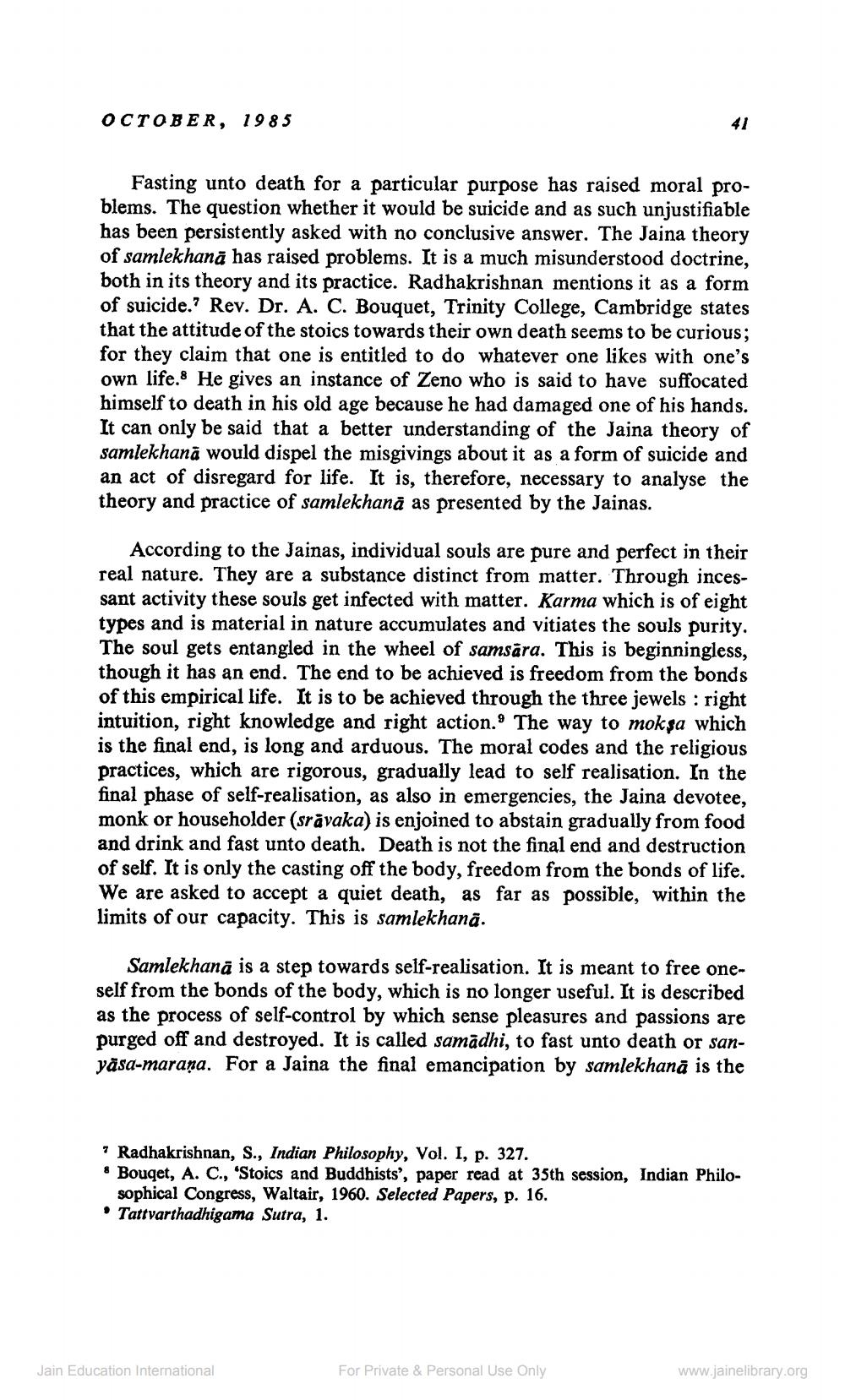________________
OCTOBER, 1985
Fasting unto death for a particular purpose has raised moral problems. The question whether it would be suicide and as such unjustifiable has been persistently asked with no conclusive answer. The Jaina theory of samlekhana has raised problems. It is a much misunderstood doctrine, both in its theory and its practice. Radhakrishnan mentions it as a form of suicide. Rev. Dr. A. C. Bouquet, Trinity College, Cambridge states that the attitude of the stoics towards their own death seems to be curious; for they claim that one is entitled to do whatever one likes with one's own life. He gives an instance of Zeno who is said to have suffocated himself to death in his old age because he had damaged one of his hands. It can only be said that a better understanding of the Jaina theory of samlekhana would dispel the misgivings about it as a form of suicide and an act of disregard for life. It is, therefore, necessary to analyse the theory and practice of samlekhana as presented by the Jainas.
41
According to the Jainas, individual souls are pure and perfect in their real nature. They are a substance distinct from matter. Through incessant activity these souls get infected with matter. Karma which is of eight types and is material in nature accumulates and vitiates the souls purity. The soul gets entangled in the wheel of samsara. This is beginningless, though it has an end. The end to be achieved is freedom from the bonds of this empirical life. It is to be achieved through the three jewels: right intuition, right knowledge and right action. The way to mokşa which is the final end, is long and arduous. The moral codes and the religious practices, which are rigorous, gradually lead to self realisation. In the final phase of self-realisation, as also in emergencies, the Jaina devotee, monk or householder (sravaka) is enjoined to abstain gradually from food and drink and fast unto death. Death is not the final end and destruction of self. It is only the casting off the body, freedom from the bonds of life. We are asked to accept a quiet death, as far as possible, within the limits of our capacity. This is samlekhanā.
Samlekhana is a step towards self-realisation. It is meant to free oneself from the bonds of the body, which is no longer useful. It is described as the process of self-control by which sense pleasures and passions are purged off and destroyed. It is called samādhi, to fast unto death or sanyasa-maraṇa. For a Jaina the final emancipation by samlekhanā is the
Radhakrishnan, S., Indian Philosophy, Vol. I, p. 327.
Bouqet, A. C., 'Stoics and Buddhists', paper read at 35th session, Indian Philosophical Congress, Waltair, 1960. Selected Papers, p. 16.
• Tattvarthadhigama Sutra, 1.
Jain Education International
For Private & Personal Use Only
www.jainelibrary.org




